Oakmont, Massachusetts is a city on the brink of destruction. Storms have ravaged the city on the coast for months. The rain rarely stops and the ocean has risen to consume entire districts. Dead sea creatures fester in the streets and crossing town requires a boat. Adding to tensions is a recent wave of refugees fleeing persecution in a neighboring town. Oakmont’s elders don’t like the newcomers and want them gone, but the storms and rising tides mean no one can escape.
Enter into this mess a private detective who’s come to town looking for answers to the strange visions that keep him from getting a good night’s sleep. This is The Sinking City.
The Sinking City is an open-world detective game from developer Frogwares. Charles Reed is the game’s protagonist, a WWI veteran and Navy diver who survived the Great War only to come home plagued by strange visions. It asks you to solve mysteries in a world based on the works of H. P. Lovecraft, then forces you to make judgement calls based on your investigation. There’s no justice system at work, the police aren’t coming to help you, and the truth often doesn’t matter. There’s no good or evil in The Sinking City, only competing interests and agendas. The Old Ones and Elder Gods, those incomprehensible space deities of Lovecraft’s mythos, are absent or indifferent.
Lovecraft was racist and xenophobic. His profound ignorance of any group that wasn’t straight, white, and male caused him to be terrified to the point of hate. And he wasn’t shy about sharing that opinion. Most video games avoid the topic of Lovecraft’s racism, The Sinking City tackles it head on. Lovecraft’s work is full of thinly veiled metaphors and outright bigotry and The Sinking City uses his racist and xenophobic anxieties as the raw material for a video game about facing existentially dread and the (often racist and xenophobic) evil people do to each other. It doesn’t always work, but when it does, The Sinking City is the best video game adaptation of Lovecraft’s work I’ve seen to date.
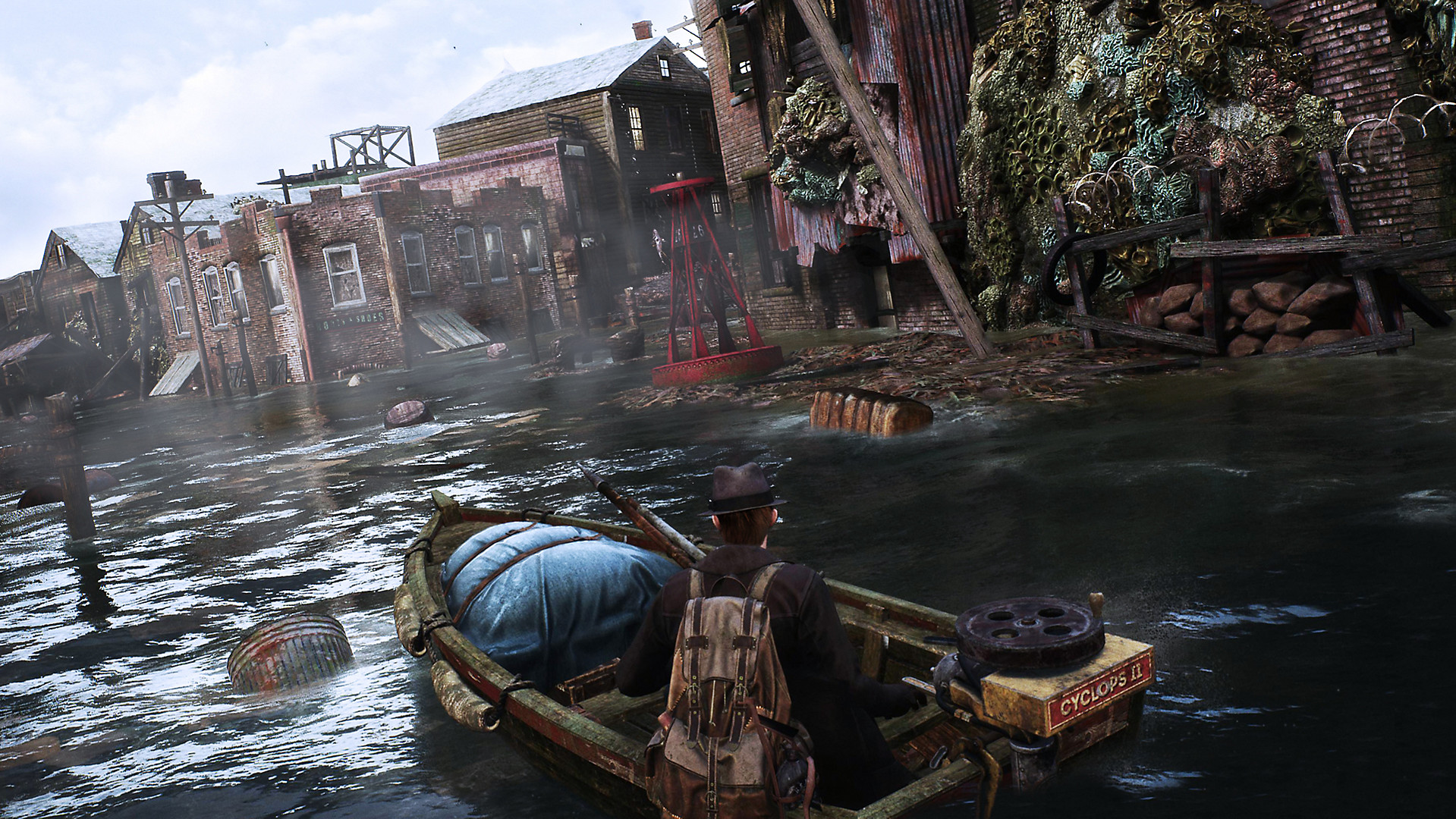
An early case has Reed asking Anna, a local religious and political leader, for information. Anna will help, but only after Reed finds out who’s been poisoning the fish her church gives out to hungry people, for free, on the streets of Oakmont. My investigation found the poisoner—Anna’s jilted ex-husband, bitter Anna left him and joined a strange church. He’s poisoning people because he thinks her adopted religion—the Esoteric Order of Dagon—is bad for Oakmont and that a few deaths will scare people away from the free fish and proselytizing. At the end of the case, I could either protect the ex-husband and help him diminish the Order’s power or kill the unrepentant bigot and let Anna keep giving out free food.
It’s a simple choice on the surface, but it’s also a reversal of classic Lovecraft tropes. The Esoteric Order of Dagon is a cult from his short story The Shadow over Innsmouth. The story is a thinly veiled screed against miscegenation where the populace of Innsmouth have, in exchange for wealth, interbred with deep ones—think The Creature from the Black Lagoon—and now resemble half-people half-fish hybrids. At the end of the story, the FBI and US Army raid Innsmouth and kill or capture large swaths of the population.
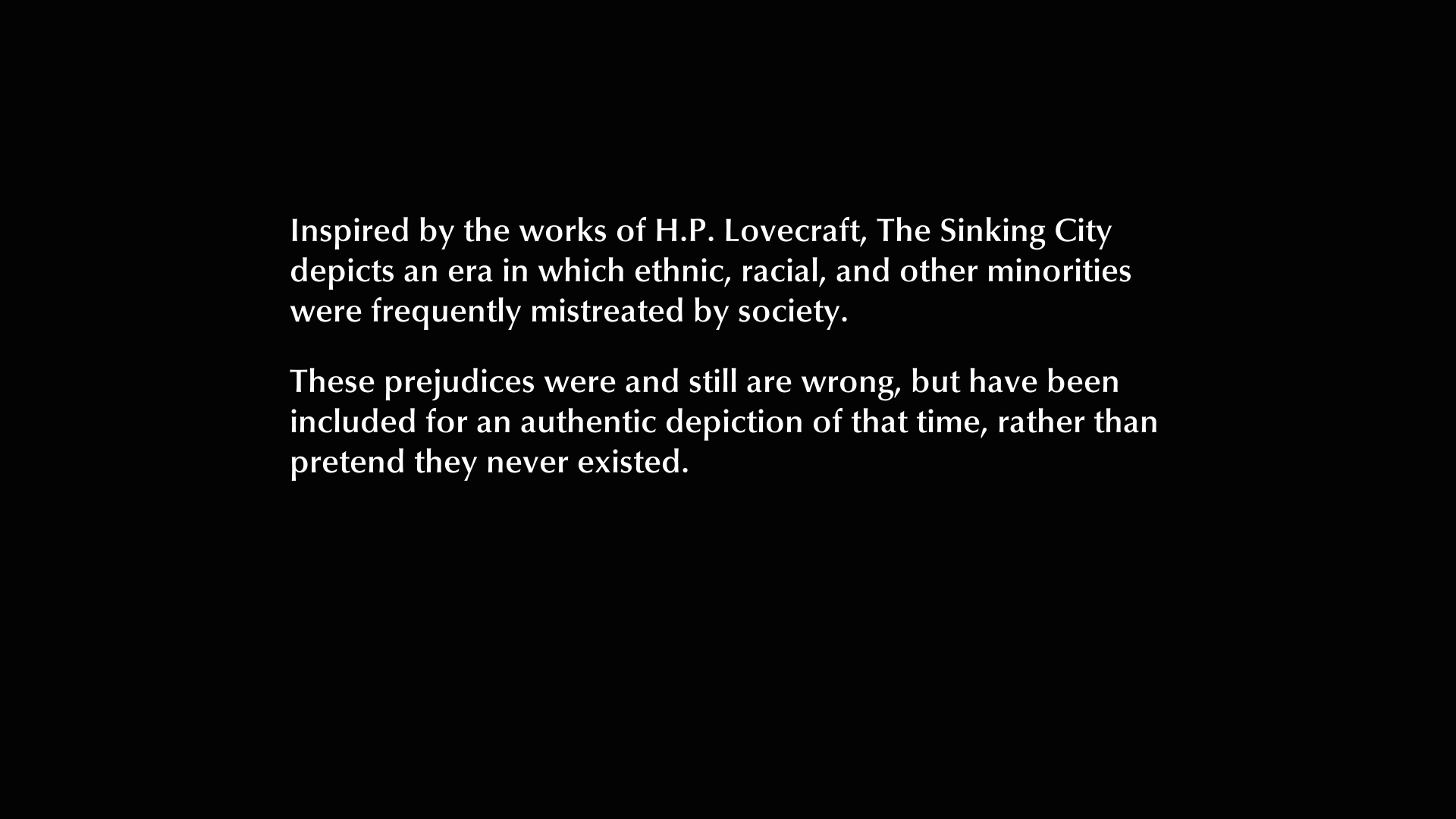
In The Shadow over Innsmouth, Lovecraft coded the Innsmouthers as mixed-race Pacific Islanders corrupting American blood on behalf of a powerful fish monster deity, Dagon. They’re evil, period, and they’re evil because of their racial heritage. It’s in the blood. In The Sinking City, the Innsmouthers are refugees with fish-like features who fled to Oakmont after the events of The Shadow over Innsmouth. They’re just trying to survive. Anna isn’t even technically an Innsmouther. She divorced her husband, joined the order, and now leads an extremist splinter sect of the Esoteric Order of Dagon that’s controlled by locals, not by the incoming Innsmouthers themselves. I even uncovered evidence that Anna is kidnapping and torturing people to help her maintain her power.
I killed the racist, despite evidence of Anna’s extremism. He was poisoning people, which felt like the more direct threat to the wider community. After I pulled the trigger, I realized I’d thought more about the choice more than in any other detective game I’d ever played (and far more than in any Lovecraft game.) As in LA Noire, a game that The Sinking City takes a number of cues from, I spent my time in Oakmont investigating crime scenes, interrogating suspects, and keeping track of evidence in a notebook. But the crimes of LA Noire and most other detective games always have a solid and evidenced based solution. There’s always a guilty party and if you made the right decisions, you could catch them. In The Sinking City, the right decision is often the one you come to after agonizing, not over the evidence, but over the motives of the people involved.
These motives are sometimes monstrous and sometimes mundane, but they’re always grounded in the strange realities of Oakmont. The titular sinking city is a fully realized and explorable place, full of big and small stories. As you walk down the streets and motor your little boat down the flooded avenues, the detail of the buildings, the fog, and the streets surrounds you with an ambiance that anchors Oakmont and gives it life. The music and ambient sound is spooky, with lazy accordions and screeching gulls invoking the decay of a seaside city slowly sinking beneath the waves. It always feels like a community on the brink of catastrophe, as if you’re exploring Silent Hill just before everyone disappeared into the mists.
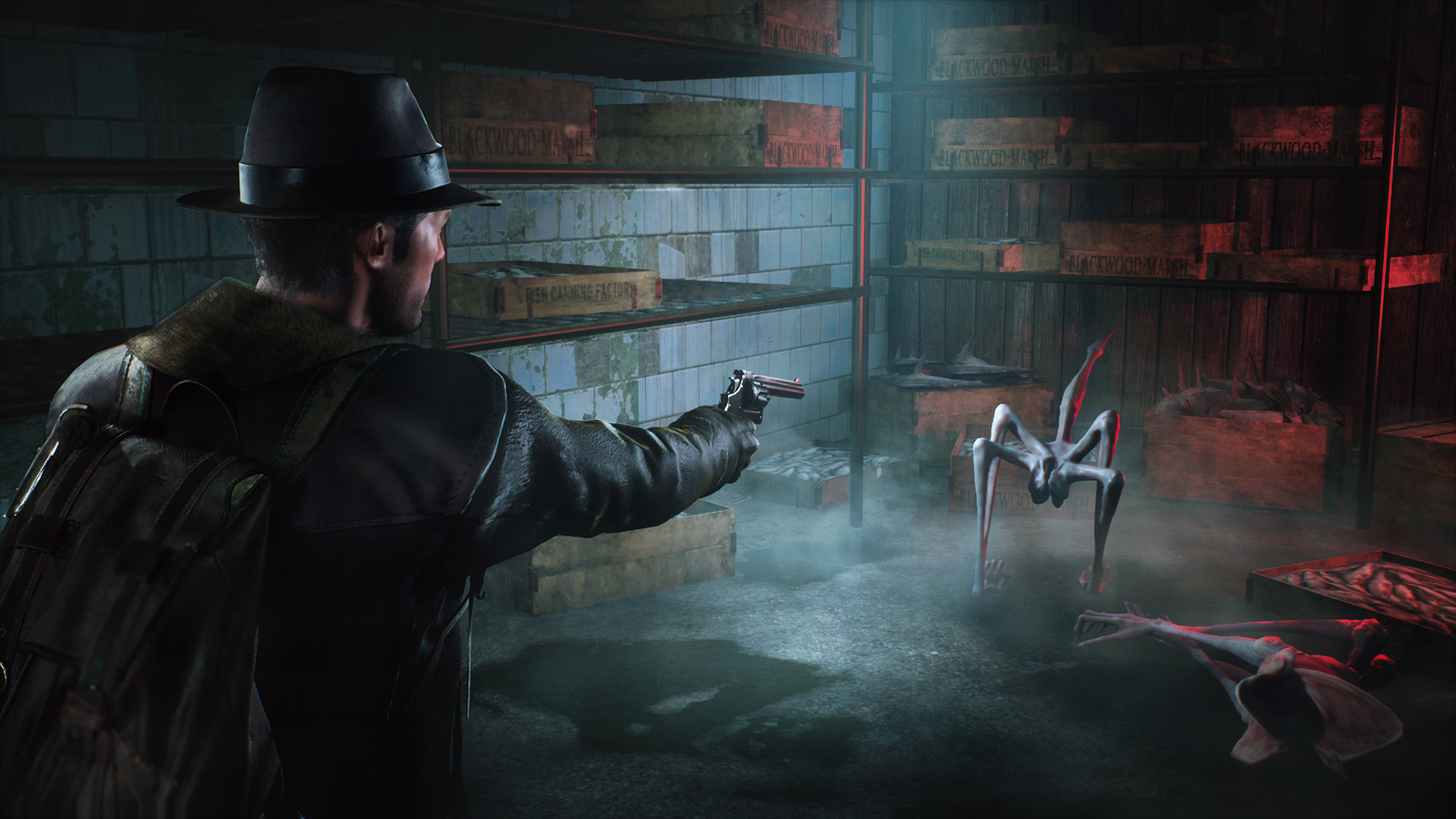
Monsters pepper Oakmont's back alleys and derelict buildings, but they’re best avoided. The combat is bad, the guns feel ineffective, and the feedback from monsters almost non-existent. There’s a leveling system where solving cases and killing monsters gave me experience points to upgrade my health meter and improve my guns, but many of the upgrades are laughably bad (such as a 10% chance to do double damage) and a maxed on health bar didn’t do much protect me from monsters. Combat feels like it’s in The Sinking City to pad the game’s length by slowing the pace of its excellent investigations.
Those investigations are the centerpiece for this game. As Reed explores Oakmont he’ll solve cases that help him get closer to the truth of his visions while taking smaller jobs that help him unravel the history of Oakmont. As he collects evidence, his notebook fills up and a “mind palace” puts together the clues into a cohesive narrative.
The “mind palace” is a visualized flow of information, like the big board a detective from a TV show uses while organizing notes on a conspiracy. Unlike most police procedurals, though, The Sinking City highlights the detective’s hand in the truth-finding process, allowing the player to manipulate evidence to come to different deductions. In the Anna case, for example, I could arrange the evidence to paint Anna as a dangerous extremist bent on controlling the city and her ex-husband a hero trying to save it, or cast her husband as a bigot and Anna as a victim of circumstance. In my case, I didn’t jump to either conclusion. The game allowed me to set the mind palace to view Anna as a dangerous extremist and her husband as a bigot. But the mind palace is only for the player to organize their thoughts, I still had to make a decision. I still killed the husband.
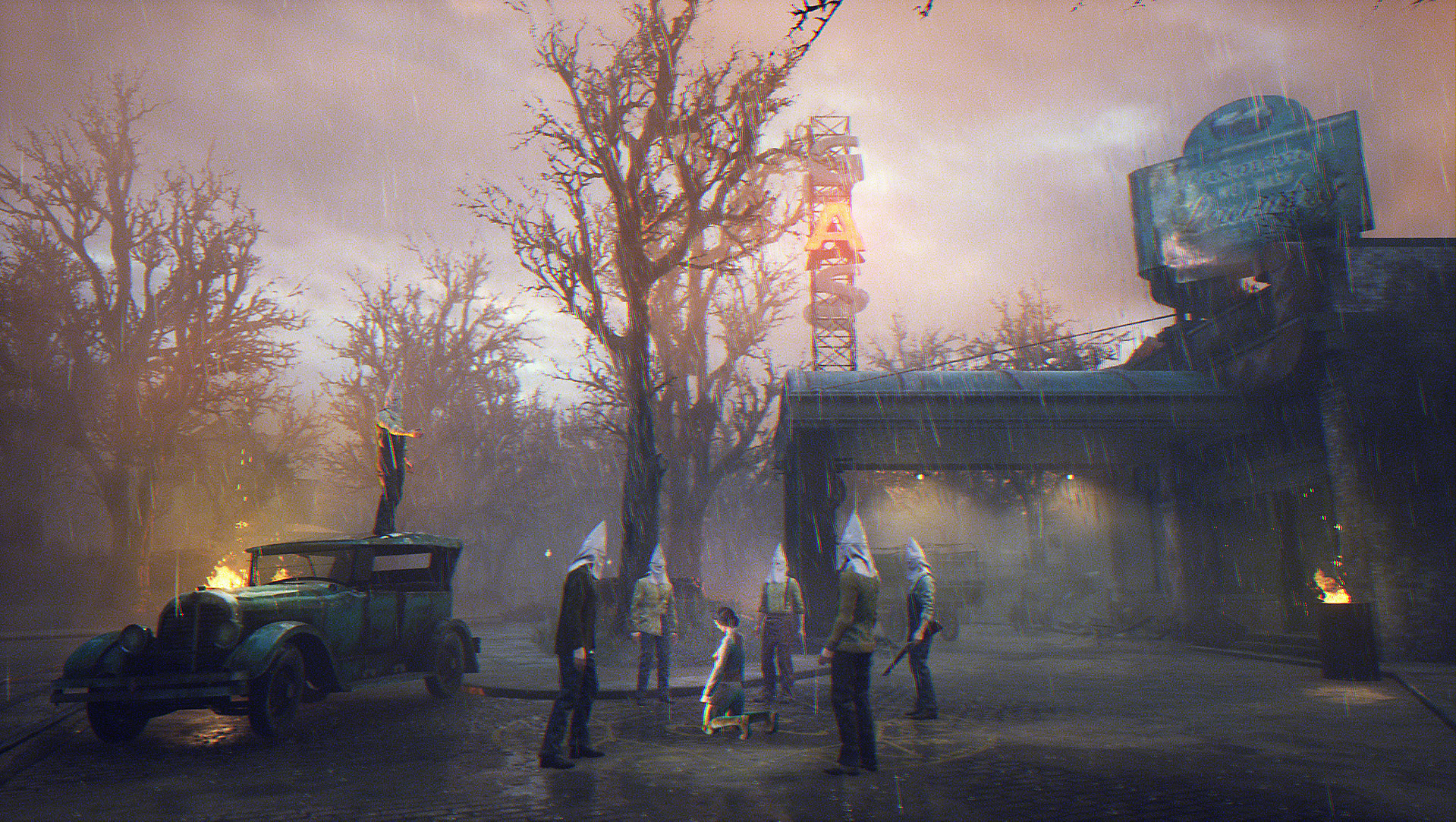
Anna’s husband was an unapologetic bigot, and The Sinking City is the first video game I’ve seen that both uses Lovecraft as an inspiration and attempts to confront his racism. Lovecraft is an important and foundational figure of American horror literature, and his views softened over time, but neither excuses the litany of awful things he wrote and said about marginalized groups, both as metaphorical monsters as in Shadow over Innsmouth and as literal semi-humans in his poetry and personal correspondence.
(It’s worth noting that, despite the presence of the KKK in the city, the racism of Oakmont is largely confined to fictional analogy. Though the city is filled with people of color (including many important NPCs), the only sign of the sort of racism that Lovecraft himself practiced is a memorial to the Underground Railroad. Even a brief mention of a KKK lynching in a police report ties the hate group's violence to the fictional world of Oakmont by making the victims Innsmouthers. On the other hand, you absolutely get to shoot the KKK. So that's a plus.)
The legacy of Lovecraft’s fiction doesn’t diminish or mitigate the horror of his beliefs. And to deny that Lovecraft was racist is to deny the personal, irrational fears he used to power his work—Lovecraft was a straight white man cataloging the fears of cloistered straight white men who, at the start of the 20th century, were just beginning to lose some of their power. Even so, his work did not resonate at the time the way it does now.
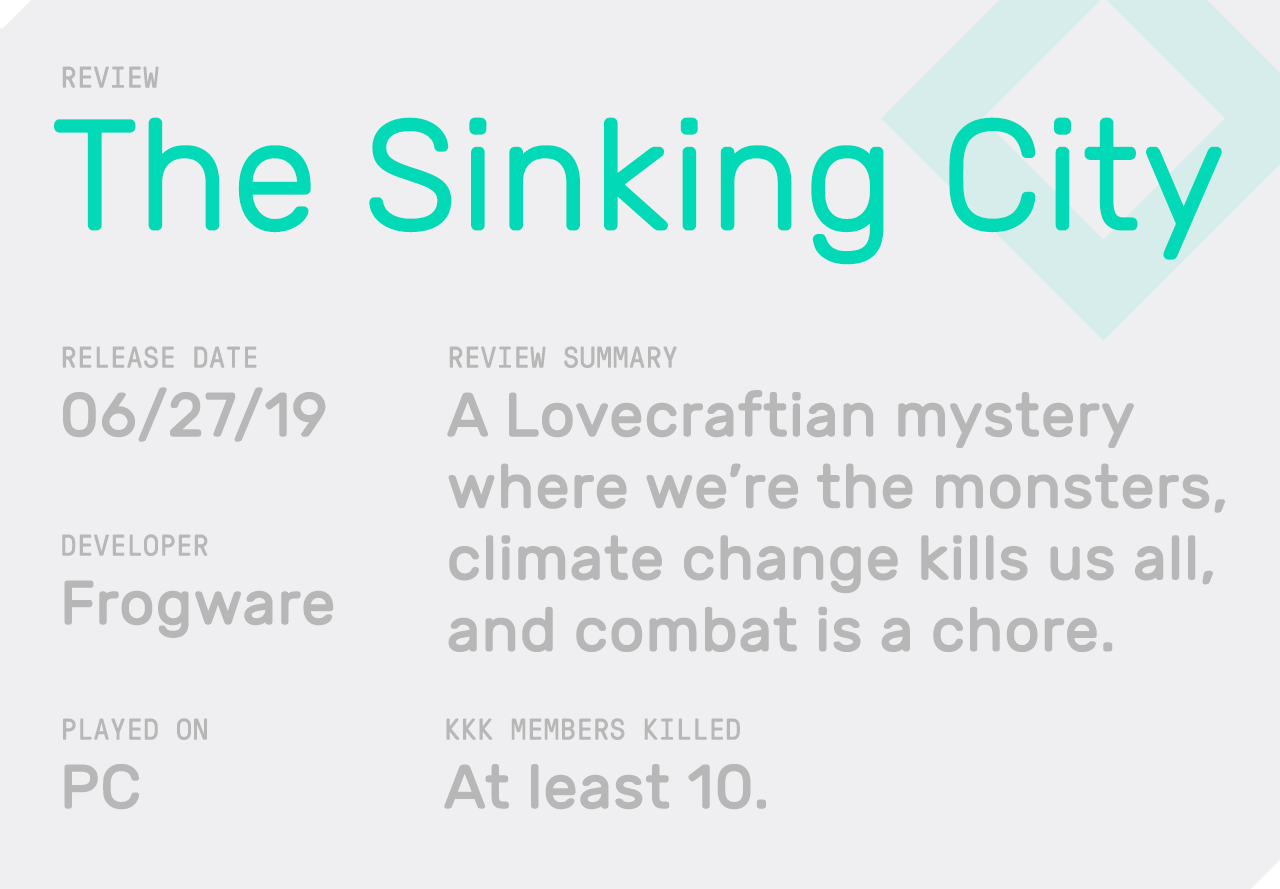
So why do people love him? Hell, why do I still love his work, albeit with a degree critical care and remove? Why do so many modern horror movies, games, comics, and books use his stories? Lovecraft was a failure while he lived and it’s possible the world would have forgotten his stories if his peers and friends, some of them from the marginalized groups he abhorred, had not championed his work after he died. But availability doesn’t translate to popularity and there’s a good reason we hang on to Lovecraft and why his work has been copied and iterated on for decades.
The best books, comics, and video games that take inspiration from his work are those that deal with his racism and xenophobia head on. Despite being born into privilege, Lovecraft thought of himself as an outsider. One of the tragedies of his work is that he was able to so eloquently describe what it feels like to be surrounded by a hostile community that’s bent on your destruction. I think this is one of the primary reasons that reclamations and reinterpretations of his work by the LGBTQ community and people of color are so good and so necessary. Works such as The Ballad of Black Tom, Cthulhu, and Lovecraft Country build on this fundamental understanding of Lovecraft’s fictions while shredding and directly commenting on the racism.
The outsider’s perspective is crucial to Lovecraft’s work, but so too is his view on the vast and unknowable cosmos—the other reason his work thrives today. Here too, books like The Ballad of Black Tom help us understand a better way to tell a modern-day Lovecraft story.
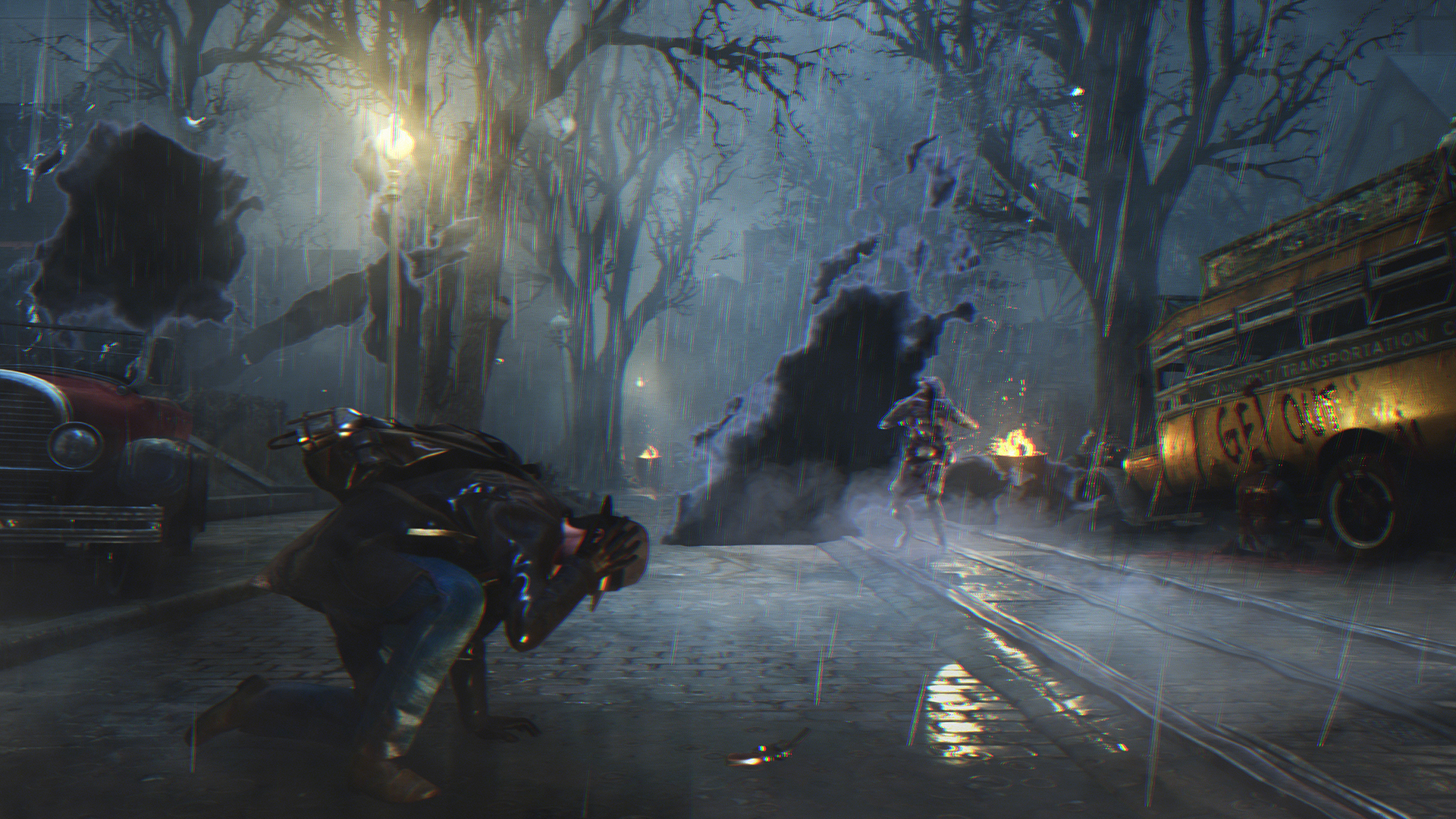
We live in a complex and often incomprehensible times. The planet is warming, reactionary politics are on the rise, and several countries wield weapons capable of ending all life on earth at the press of a button. That’s just a taste of the complicated and existentially terrifying problems facing us. Lovecraft’s formless and alien pantheon of gods serve as a ready stand in for these existentially terrifying problems.
Cthulhu and Azatoth, as ficitions, are as incomprehensible and anxiety-inducing as many of the worst social, political, and environmental problems that threaten us today. The Sinking City’s Oakmont is more than just a town plagued by a supernatural crisis—it’s a community dealing with the results of catastrophic climate change and a refugee crisis. Video games typically just do straight retellings of Lovecraft. They borrow the aesthetics and drape them over simple stories about good versus evil where Elder Gods are stand-ins for malevolent forces.
But Lovecraft didn’t think those monsters were evil, they were metaphors for an indifferent and uncaring universe. The problem is that today’s existential problems—a budding refugee crisis, nuclear weapons, and various climate crisis—seem incomprehensible but all have roots in human evil. They are huge and indifferent to us as individuals, yes, but as Victor Lavalle writes in his rehabilitation of The Horror of Red Hook— The Ballad of Black Tom—for those on the margins, the world is not indifferent, it is cruel. And cruelty is scarier.
The Sinking City humanizes Lovecraft’s principal villains, turns them into people, and tells a better story because of it.
The Sinking City’s protagonist, Charles Reed, is a man trying to make good choices in a City best by horrors he’s incapable of comprehending or changing. It’s primary focus is not on whether or not Reed can save the city, but how he treats the individual people—even and especially the supernatural people—he meets during his journey. You’re making choices, but I always felt like I was making judgement calls based on my own morality and that the larger narrative would proceed with or without me. No other video game based on Lovecraft’s work has made me feel as small and powerless as The Sinking City.
Lovecraft’s monsters were neither good nor evil, but startling indifferent. Shub Niggurath, Cthulhu, and Azathoth view humans the way many humans view bacteria. The entities aren’t evil, but the people who worship those entities certainly are. And the people who worship those entities in a Lovecraft story are always coded as groups that white anglo-saxons living in the northeastern United States would find frightening. Lovecraft’s The Horror of Red Hook reads like a catalogue of racial stereotypes and suburban fears of the inner city.
The Sinking City doesn’t quite rise to the level of Lovecraft Country or The Ballad of Black Tom, but it does treat its Innsmouth minority with care and respect. These aren’t people who traded their humanity for gold, but a complicated and marginalized group. The Sinking City humanizes Lovecraft’s principal villains, turns them into people, and tells a better story because of it. The Innsmouthers aren’t a monolith, but a varied group of people trying to survive in a city that doesn’t want them. A city where the KKK keeps them out of certain districts, a city that often brutalizes them in the streets. It’s not always well done, but it’s better and more interesting than literally every other Lovecraft game I’ve ever played.
Have thoughts? Swing by the Waypoint forums to share them!
from VICE http://bit.ly/2X5iQal
via cheap web hosting
No comments:
Post a Comment